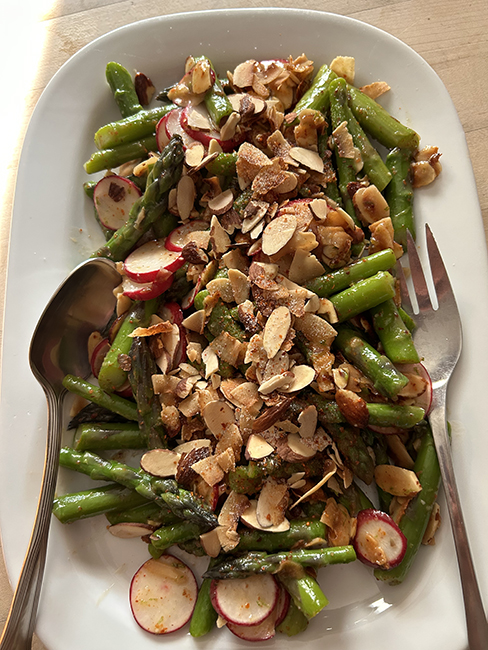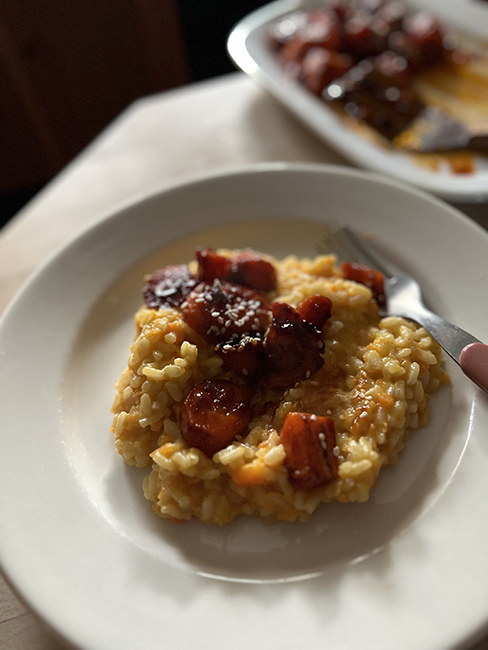Elsewhere on this blog you’ll find a recipe for calabacitas, a cheesy mix of zucchini, corn, and green chiles served in New Mexico. You can use calabacitas as an enchilada filling, and a few years ago – gosh more than a few, like 15, 2008! – I thought it’d be a nice quiche filling too. Calabacitas Quiche was my contribution to the 2008 Pie Palooza, a benefit formerly put on by REAP Food Group. I even printed labels with all the ingredients.
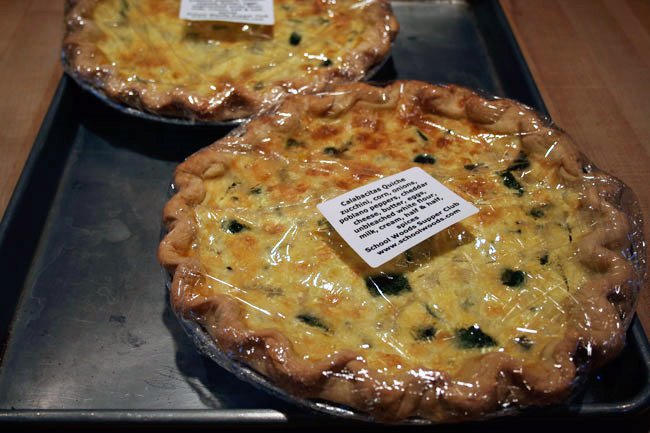
Here’s the recipe:
Serves: 6-8
Takes: about 40 mins. active time, plus an hour to chill the crust.
Crust ingredients:
1 1/2 cups flour
nice pinch of kosher salt
2 teaspoons sugar
6 tablespoons unsalted butter
3 tablespoons vegetable shortening
3-4 tablespoons cold water
Filling ingredients:
2 tablespoons butter
One bunch of scallions, sliced, including white and green OR 3/4 cup chopped onion
1 large zucchini or 2 small, or a mix of zucchini and yellow squash, quartered longwise, and sliced
1 large or 2 small poblano chiles, roasted, skinned, seeded, and chopped OR one 4 oz. can mild green chlies
3/4 – 1 cup corn kernels, fresh cut from 1-2 ears, frozen, canned, or whatever you’ve got
salt & fresh ground black pepper to taste
1 cup grated cheddar cheese
3 eggs
1 1/2 cups half & half
- Make the crust: Measure the flour into a bowl and add the sugar and salt. Slice the shortening and butter into cubes and drop into the flour mixture. Cut the fats into the flour with your fingers, a pastry blender, or paddle attachment of your stand mixer, until the mixture resembles coarse meal. Drizzle in the water by tablespoons while stirring, until you’ve got a bunch of small clumps of dough. Dump out onto a floured surface, knead lightly to bring it together, and then flatten the dough into a disk and wrap in wax paper or plastic wrap and chill for about an hour.
- Make the filling: melt the butter in a large skillet, and add the scallions or onion. Sauté over medium heat until the onion looks translucent, then add the zucchini. Cook until the zucchini is starting to soften, and then add the poblanos or chiles, corn, and salt & pepper. Cook until the squash is just tender, and then set aside to cool.
- Assemble the quiche: Heat the oven to 375° with a rack near the bottom and another near the middle of your oven. Roll out the crust and fit it into a 9-10 inch pie dish. Put 2/3 of a cup of the grated cheese in the bottom, then add the zucchini filling. You’ll find some images of rolling out crust and fitting it into a pie dish here.
- Beat the eggs, add the half & half, and pour this custard into the crust.
- Place the quiche on the bottom rack and bake for 10 minutes. Sprinkle the remaining 1/3 cup of cheese over the top of the quiche, and bake for another 10 minutes. Move the quiche up to the middle rack and continue baking until it is puffed and golden brown in spots, about 20 minutes more. Cool for 15 minutes before serving either hot or warm.
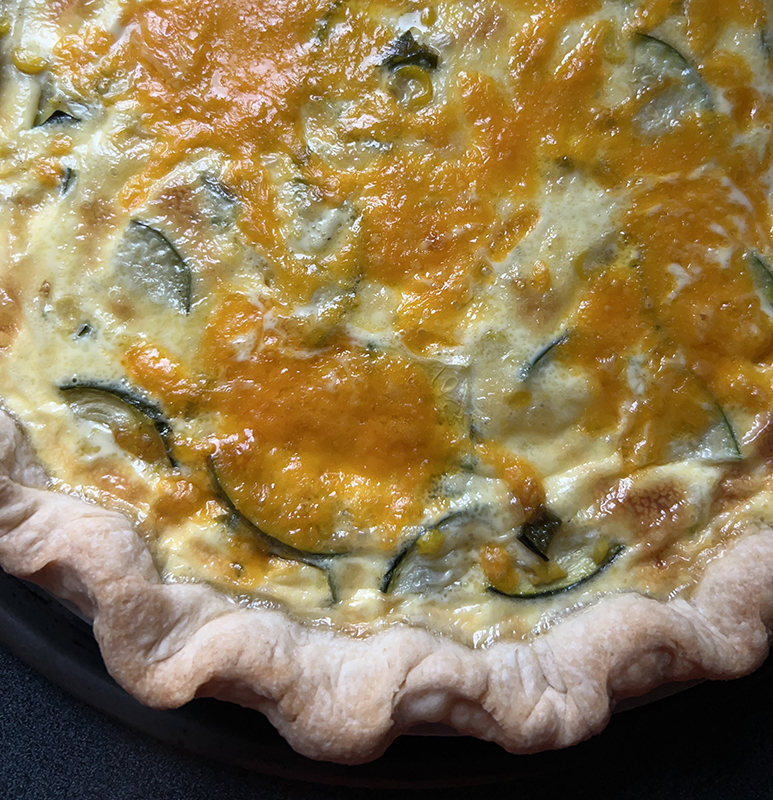
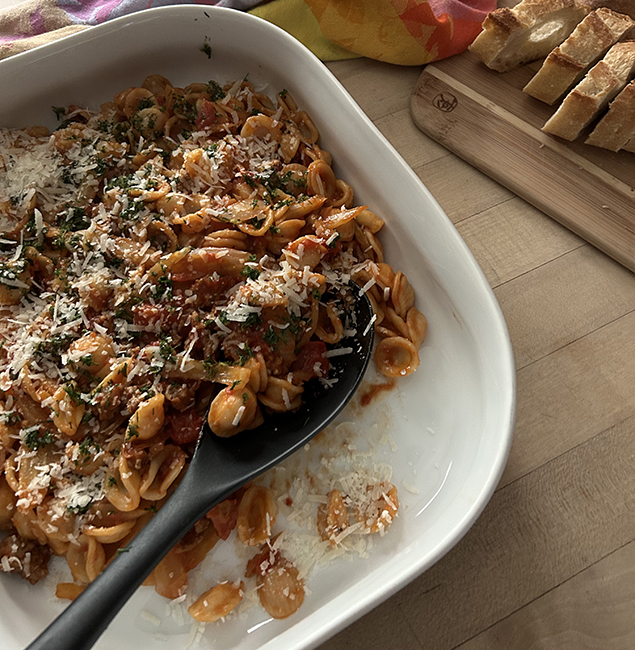
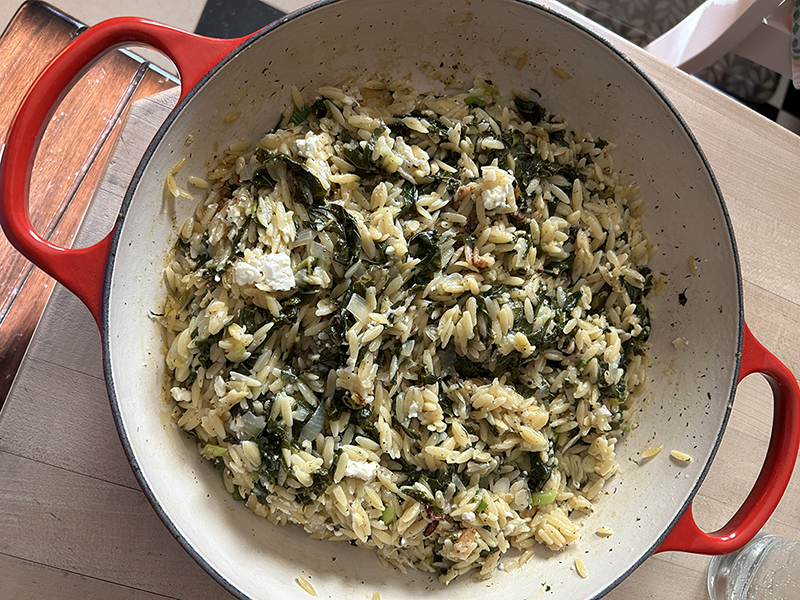

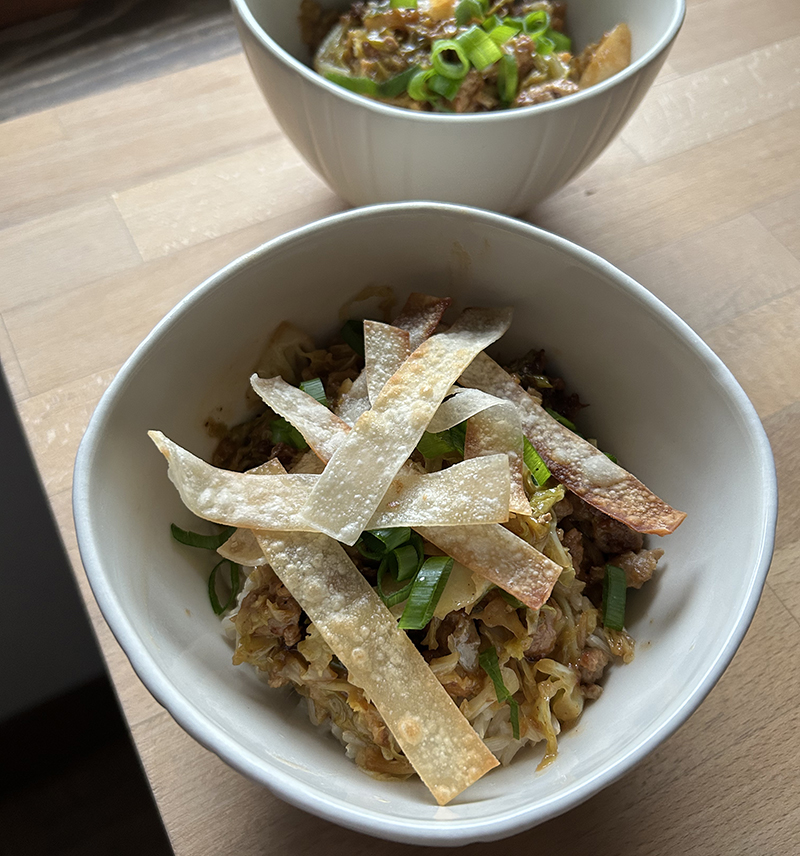
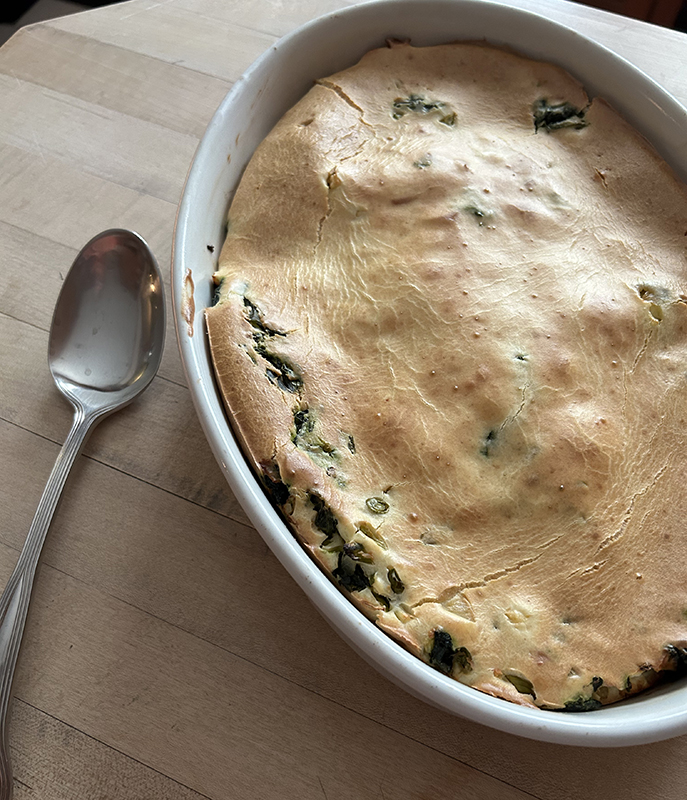 This recipe is based on a Mark Bittman recipe called Kale or Chard Pie, from his book
This recipe is based on a Mark Bittman recipe called Kale or Chard Pie, from his book 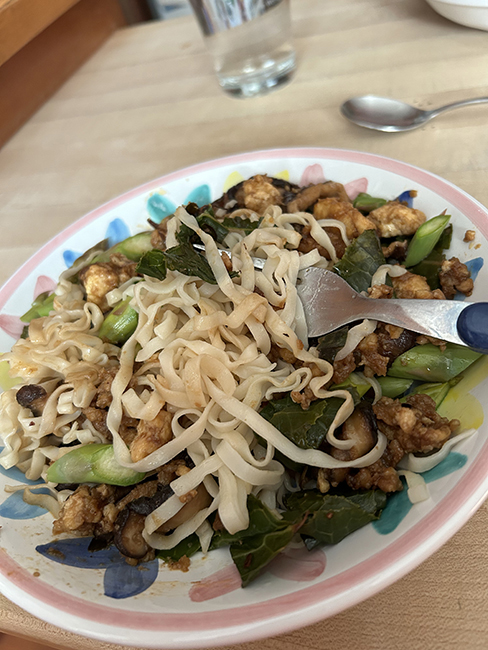
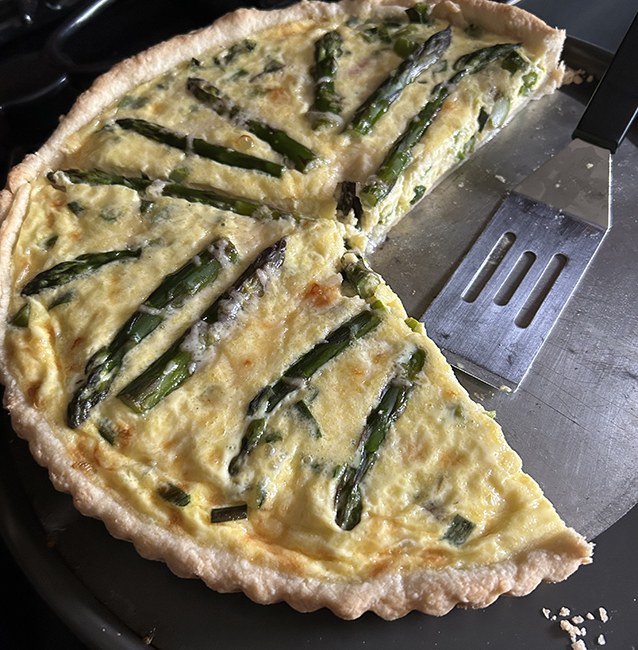 This tart is a little more elegant than a standard quiche, and intended to be baked in a 9- or 10-inch flan ring or loose bottom fluted pan – the kind where you can detach the bottom from the sides after baking. But if you don’t have either of those pieces of kitchen equipment, you can bake the tart in a regular pie pan. A shallow, metal, 9-10 inch pie pan will work best. [originally posted in 2023, with significant update in 2025; I mean, look at
This tart is a little more elegant than a standard quiche, and intended to be baked in a 9- or 10-inch flan ring or loose bottom fluted pan – the kind where you can detach the bottom from the sides after baking. But if you don’t have either of those pieces of kitchen equipment, you can bake the tart in a regular pie pan. A shallow, metal, 9-10 inch pie pan will work best. [originally posted in 2023, with significant update in 2025; I mean, look at 